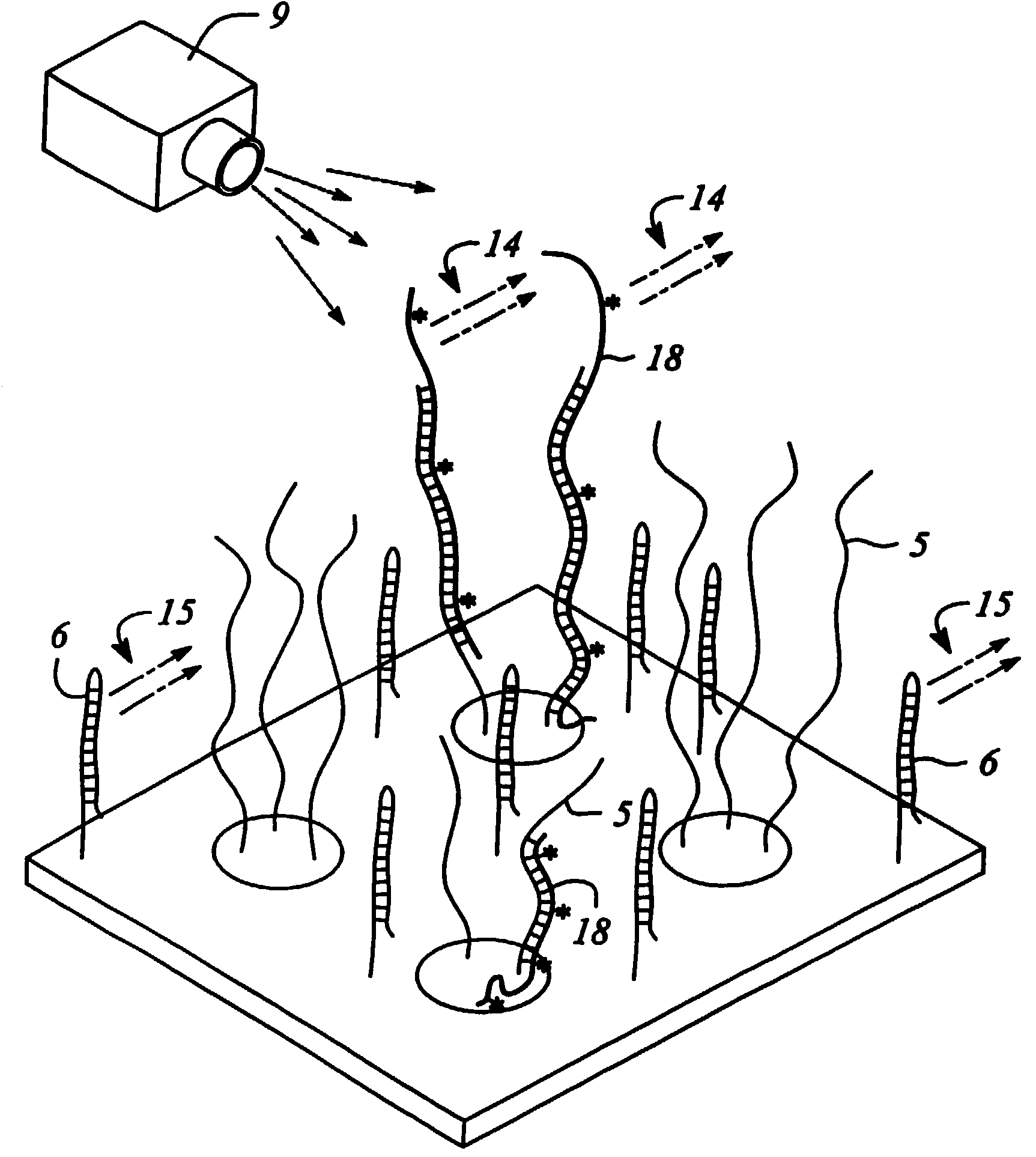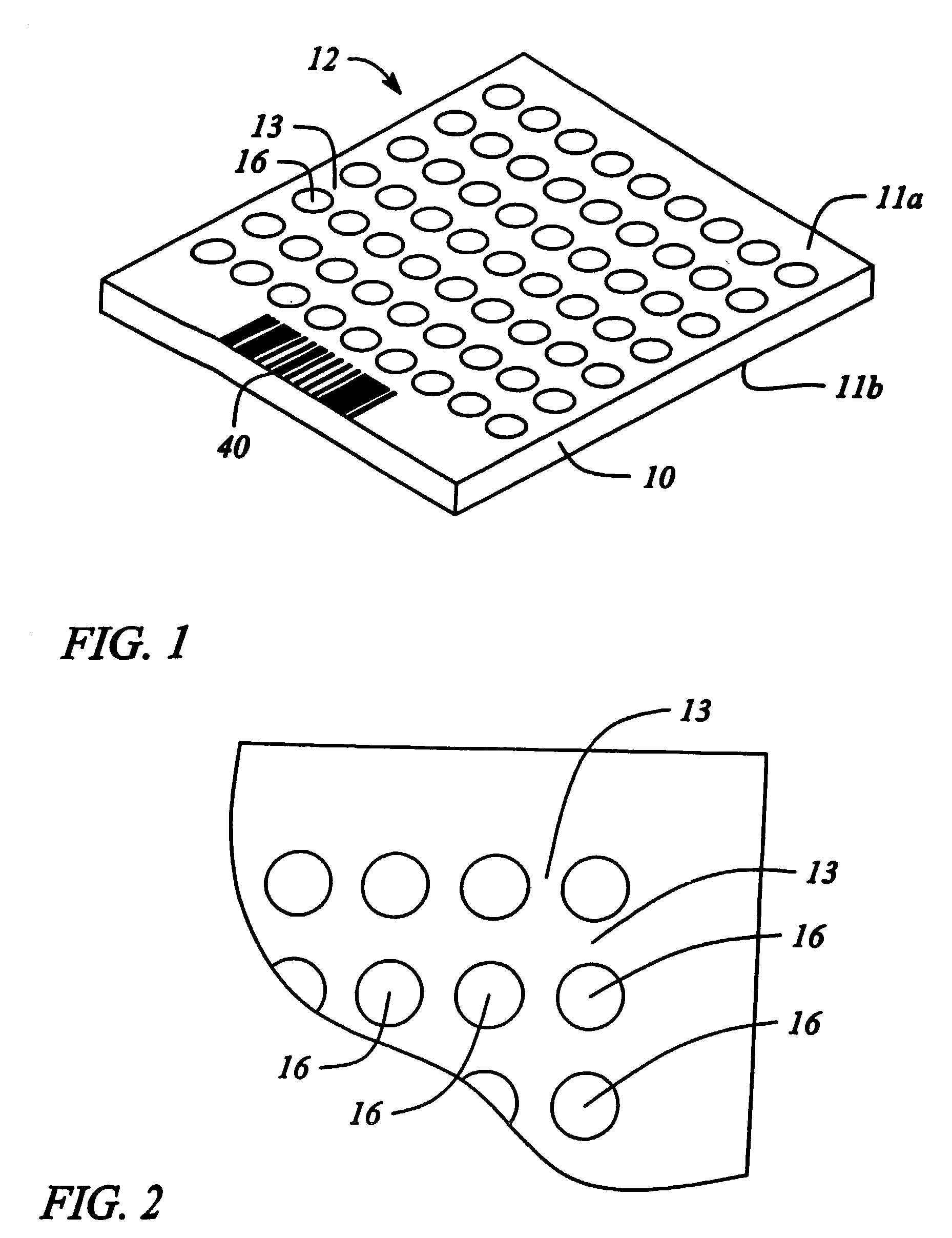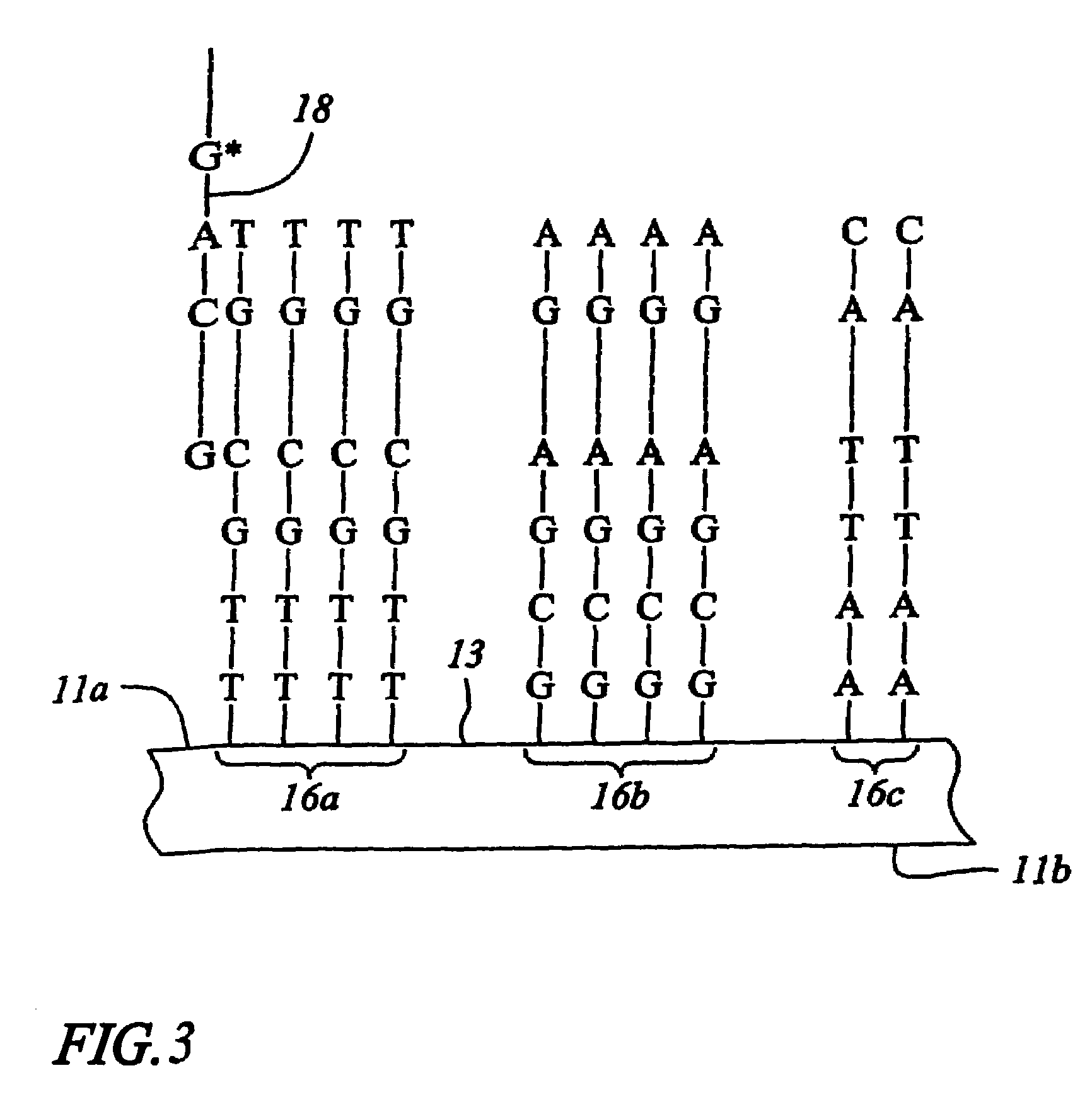Micro arrays with structured and unstructured probes
a micro array and probe technology, applied in the field of nucleic acids, to achieve the effect of reducing background nois
- Summary
- Abstract
- Description
- Claims
- Application Information
AI Technical Summary
Benefits of technology
Problems solved by technology
Method used
Image
Examples
example 1
[0056]FIG. 7 shows a micro array with attached unstructured probes 5 and structured probes 6 to a substrate surface 11a. Micro arrays and samples were prepared according to protocols previously described. The figure shows the high intensity level of the unstructured probes 5 bound to the labeled target 18 (light yellow or green shows strong signal). Areas of no signal are indicative of where the structured probes 6 have been positioned on the substrate surface 11a.
example 2
[0057]FIG. 8 shows a comparison of the signal intensities produced by various channels across the substrate surface 11a. In particular, the intensities in both the green and red channels are similar and then drop off at various positions across the array surface where the structured probes 6 have been positioned (roughly channel columns 915–945).
example 3
[0058]FIG. 9 shows a set of plots comparing performance of GD3 negative control probes plotted against background mean signal (10 array). The graph on the left shows the averaged red vs. green background subtracted signal for the negative control probe GD3 for 10 replicate arrays. The right graph shows that average red and green background mean signals on the same arrays. Comparing the two graphs demonstrates that the negative control probe has a lower background than the average background mean signal for the slide and is better suited to be used for background correction. Each point is the average of 20 probes. Description of the experiment: Human Hela cDNA targets were generated from 20 mg of total RNA by incorporation of cyanine 5 or cyanine 3 using the Agilent Direct Labeling Kit. The cyanine-3 and cyanine-5 targets were mixed and hybridized to each Agilent cDNA microarray for 17 hours at 65 degrees centigrade. The slides were washed, scanned on an Agilent scanner and feature e...
PUM
| Property | Measurement | Unit |
|---|---|---|
| diameter | aaaaa | aaaaa |
| diameter | aaaaa | aaaaa |
| diameter | aaaaa | aaaaa |
Abstract
Description
Claims
Application Information
 Login to View More
Login to View More - R&D
- Intellectual Property
- Life Sciences
- Materials
- Tech Scout
- Unparalleled Data Quality
- Higher Quality Content
- 60% Fewer Hallucinations
Browse by: Latest US Patents, China's latest patents, Technical Efficacy Thesaurus, Application Domain, Technology Topic, Popular Technical Reports.
© 2025 PatSnap. All rights reserved.Legal|Privacy policy|Modern Slavery Act Transparency Statement|Sitemap|About US| Contact US: help@patsnap.com



